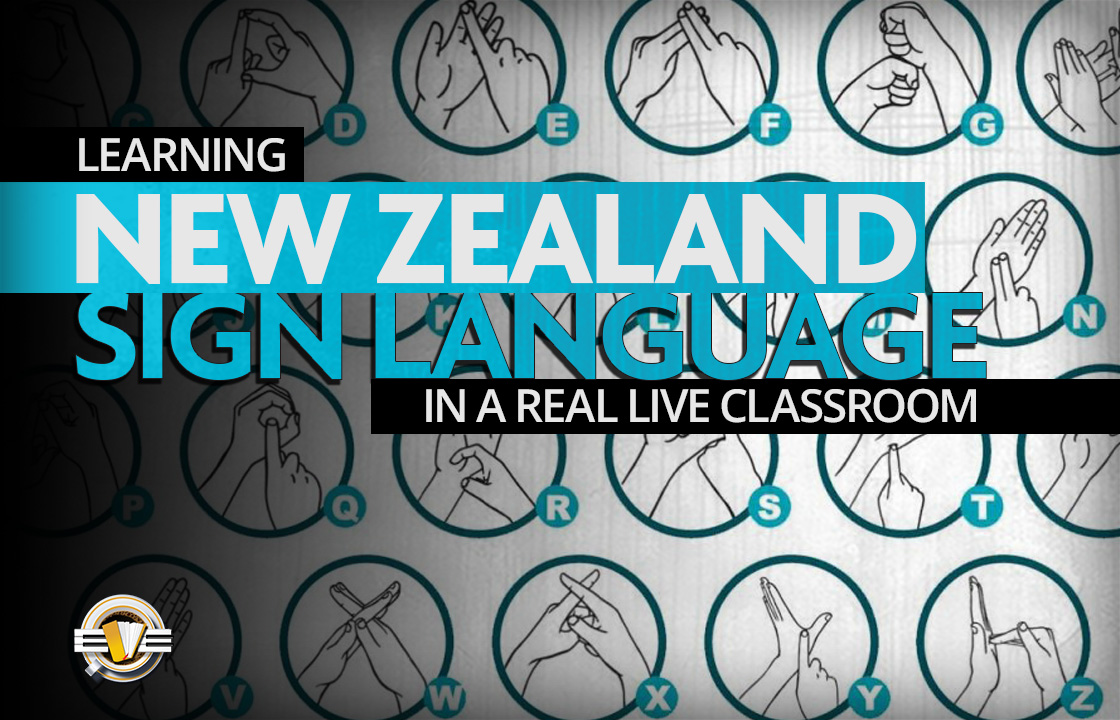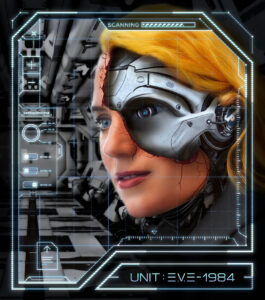Learning NZSL in a real live classroom

I finally did one of the things I’d scheduled for the elusive ‘One Day’: I went to a New Zealand Sign Language class. A real one. With a real live teacher and real live people. People who looked just as fidgety and unsure as I did.
I’d already concluded that merely memorising signs from the online NZSL dictionary, wasn’t enough. The visual official language of New Zealand has its own obscure grammar rules (which, from where I stand, look more like an absence of grammar rules). I needed a real live person to teach me how the signs are supposed to go together. And if I would be signing to people who would sign back, the language would be more likely to stick. Thus goes the theory.
This meeting was an introductory thing, primarily to gauge interest and introduce the teacher. It lasted only half an hour, and at which we learned how to introduce ourselves, how to ask someone’s name, and how to say hello and thank you. The proper classes would start next week, we were told—one class a week—and each session would last two hours.
The teacher, Kiritai, was president of the Hawkes Bay Deaf Club, and an award-winning NZSL teacher, so this was going to be as good as I can get. If I couldn’t learn New Zealand Sign Language here, I may as well resign myself to my bedroom, where I’d curl up in the dark and carve pictures into the walls for archeologists to decipher later during a study of crude language forms.
The strange grammar of NZSL made its first appearance when we were shown how to ask someone’s name. The entire conversation put me in mind of a rudimentary robot. Clumsily trying to sign my way through it made me feel like one, too. Word-for-Sign, it went:
—Hello
—Hello
—Your name what?
—My name E-V-E
—Your name E-V-E?
—Good
—Thank you
I noted a few other things about the language, over that half-hour.
Signers go fast.
I know how to sign the alphabet. (‘…H-I-J…’ feels particularly satisfying, flowing on so smoothly from one to the next. It’s a pity my name isn’t Hij.) But when someone else is signing the letters, I’m viewing them from an unfamiliar perspective, putting me at an immediate disadvantage. And when the person is signing fast—well, it’s normal speed, I suppose, instead of newbie-slow—the perspective can easily look like just flittering fingers. And once I lose track of the signs, it’s hard to pick it back up again.
It’s a language of physical enunciation.
This is a problem. I’m an impassive speaker. Most of the nuance of my communication is in the vocabulary I select. I’m much more expressive in writing than I am in speaking. While hand gestures and facial expressions do occur, they’re relatively mild.
That wasn’t going to work, in this physical language. Not only did my hand gestures have to be grand and sweeping (so intricate movements could be identified), but exaggerated facial expressions become necessary—they give the language its tone and inflection. They communicate the context and intent.
I wonder if this is pertinent to the sign for ‘what’. Whenever I signed it in a request for someone’s name, I felt like I was telling them off. Or indicating that I thought their name was a bad choice on the part of their parents. The sign for ‘what’ looks like Censure Finger. ‘With lowered eyebrows,’ the instruction sheet said, next to the relevant picture, ‘extend index finger and move from side to side.’
It’s exactly what I do when I’m telling my kids not to do something, but when I’m on the phone so I can’t actually yell it.
So if ‘lowered eyebrows’ indicate ignorance or confusion, to the deaf, what expression should I be using for ‘Don’t you dare touch my computer’?’ Should I be baring my teeth and flattening my ears against my head?
You can’t ‘talk’ while holding…anything.
I discovered this after I picked up my wallet. Coffee groups for the deaf must be a very static affair. ASL—the sign language of North America—signs the whole alphabet using only one hand. Not so, our one. Someone asked my name, after I’d picked up my wallet. I began to sign back, “My name—” but then had to stop, as the fingers wrapped around my wallet were very unavailable for indicating which letter I needed. (I’ve since discovered, in my own research, that ‘yellow’ and ‘hair’ both only require one hand though, so am wondering if I can just make that my name instead.)
Learning a new language is always going to have its frustrating moments. But of course, knowing this—intellectually—isn’t any reassurance when it actually happens. There was one point in the evening when Kiritai was signing something to me personally, and I have no idea what it was. A good amount of her accompanying vocalisations during the evening had been understandable, which had aided the match-the-sign-to-the-word process…but, in that moment, I had no idea what she was saying to me. Just remembering it, now, gives me shallowed breathing, widened eyes, and various other symptoms of panic.
I wonder how frustrating she finds it, trying to teach sign language to a hearing person, who is so used to relying on their hearing ability, that they’re completely obtuse without it…
But then, I suppose any teacher who’s won awards for their skill must have developed an impressive degree of patience along the way. Starting next week, she’ll need it.
And so will I.


10 Feb 2017
I took about a term’s worth of NZSL many years ago, and about all I can remember now is how to ask someone if they’re deaf – which I actually got to use In Real Life once.
10 Feb 2017
Seems a helpful one to know!
I think I should put a high priority on learning to sign, ‘Please go slower.’
10 Feb 2017
Always a useful phrase in any new language!